

The Failed Promise of the VCS/2600 Trak-Ball Controller
By Scott Stilphen
The trackball controller was truly a wonder when it first arrived in the local arcade. I first saw it on Atari's 1978 seminal Football arcade game at Roller King in Kingston, PA sometime in early 1979. Released in October of 1978, the game seemed almost magical as to how it worked. How could simply rolling a ball around control something on the TV screen? There was however one slight oversight to Atari's design that affected those with small hands, for the spacing between the ball and the metal panel was wide enough that it would occasionally pinch your fingers when rolling it. It certainly wasn't painful enough to keep me from playing it, though, and the game soon became a favorite of mine. So where did the idea for the Trak-Ball controller come from?
The History of the Trackball
The trackball device can trace its roots back to the military. A British engineer by the name of Ralph Benjamin created the first trackball (called the "roller ball") in 1946 as part of the Comprehensive Display System (CDS) radar plotting system. It was patented in 1947 but only one prototype was built; production versions of the CDS used joysticks. In 1952 the Royal Canadian Navy built a similar system called the Digital Automated Tracking and Radar system (DATAR), which actually used a 5-pin bowling ball (LINK).
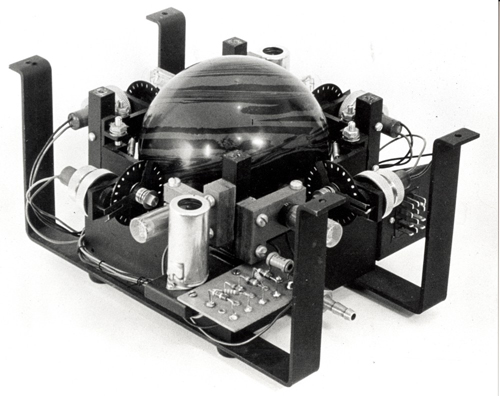
The Royal Canadian Navy's DATAR trackball
device. Photo credit Computer History Museum.
By the 1960s, similar devices were used with other radar tracking systems in other countries, including the U.S., as well as in other non-military applications. Trackballs were used to control giant antenna dishes, such as the Honeysuckle Creek Tracking station in Australia that was used to help with NASA's Apollo missions; years later a trackball device was tested on NASA's STS-43 shuttle flight (LINK).
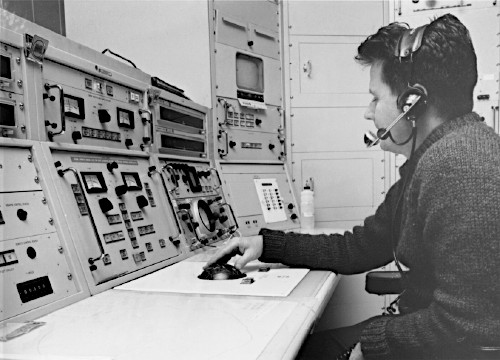
Paul Mullen moves the Honeysuckle Creek (HSK) Tracking station
antenna with Servo console's track ball (late 1960s). Photo credit
HoneysuckleCreek.net.
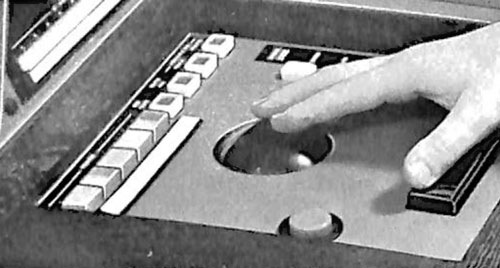
A "slew ball" being used at an air traffic
control station (1960s). Photo credit IFATCA Journal of Air Traffic
Control.
Contrary to popular belief, Atari's Football was not the 1st arcade game to use trackball controllers, but rather the 1st Atari arcade game. Taito apparently released a game called Soccer Deluxe (or Soccer DX) the year before, and Sega released World Cup in late 1977, which featured 2 trackballs (1 for each player). Midway released their coin-op Shuffleboard in 1978 as well which used a trackball controller they referred to as the "big roller ball" in their flyer. Prior to Atari's Football, they also had an unreleased prototype called Mini Golf in 1978.
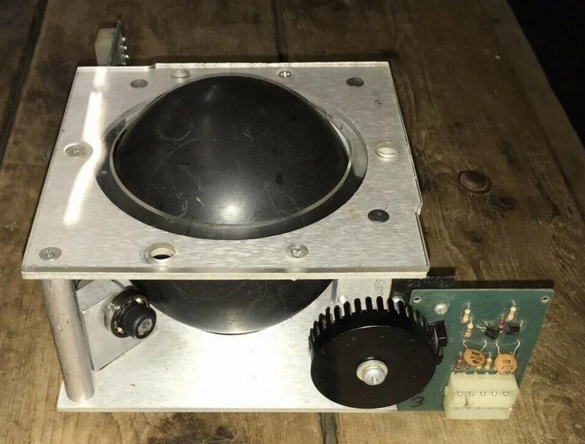
Atari's 4.5" Trak-Ball (TM) controller was designed by Jerry Lichac
and used in their Football,
Basketball,
Baseball, Soccer, and Missile Command arcade games.
The success of Football begat other Atari trackball sports games - Basketball, Baseball, and Soccer, as well as a 4-player version of Football. The most-successful game to utilize the large 4.5" Trak-Ball was Missile Command. The cabaret and cocktail table versions of Missile Command used a smaller, white 2.5" Trak-Ball controller (called a Mini-Trak-Ball in the manual), which was next used in all 3 cabinet configurations for Centipede. 1982 saw a black version of the 2.5" Trak-Ball used in Millipede, Liberator, and Quantum, as well as the unreleased Akka Arrh (AKA The Sentinel AKA Target Outpost) and Cloud 9. 1983's Crystal Castles used a red translucent backlit ball in both the upright and cocktail table cabinets that was a real eye-catcher.
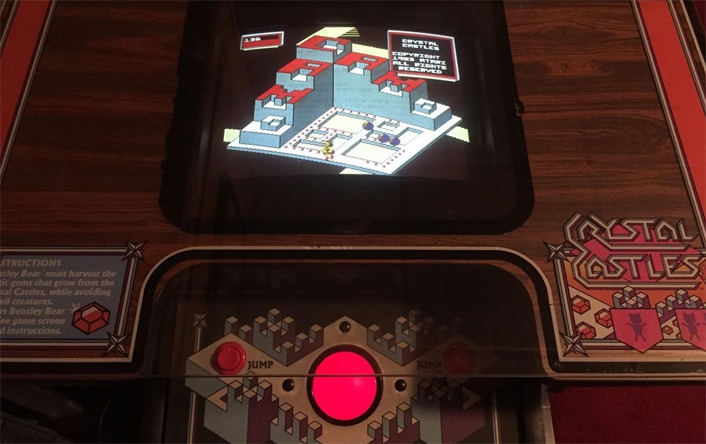
Crystal Castles would be the last Atari arcade game to use a trackball, before the company was broken up in 1984 and parts of it were sold off. Atari's coin-op division, under the Atari Games name, would continue to use the controller, starting with Marble Madness in 1984. The game used a pair of translucent balls - one blue and one red. It would be another 6 years before Atari released another game with a trackball, 1990's Shuuz, which turned out to be its last. A sequel to Marble Madness, Marble Madness II Marble Man, was prototyped, but it used joysticks. Other companies and games that used a trackball:
4 Player Bowling Alley (Midway 1979)
Extra Bases (Midway 1980)
Laser Base (Amstar Electronics 1981)
Beezer (Intrepid Marketing 1982)
Birdie King (Taito 1982)
Reactor (Gottlieb 1982
Slither (GDI 1982)
Birdie King 2 (Taito 1983)
Snake Pit (Sente 1983)
Track & Field (Konami 1983)
Wacko (Bally/Midway 1983)
Birdie King 3 (Taito 1984)
Bouncer (Entertainment Sciences 1984)
Cube Quest (Simutrek 1984)
Ghoalie Ghost (Bally/Sente 1984)
Mini Golf (Bally/Sente 1985)
Big Event Golf (Taito 1986)
U.S. Classic (Seta/Taito 1989)
Segasonic the Hedgehog (Sega 1993)
Classic Football NFL (Namco 2003)
Variants of the trackball were used in other games, such
as Atari's The Adventures of Major Havoc and Bally/Midway's Kick-Man
(which looks like it uses a trackball but it has a pin running through it, only
allowing for left or right movement), but despite Atari's efforts to broaden its use beyond
sports games, the only games that have continued to implement it are sports games, most notably Global VR's Golden Tee series.
Marketing Hype That Failed to Deliver
Back in the trackball's heyday of the early 1980s, it was obvious that translating popular arcade games like Missile Command and Centipede to home systems became an issue due to being limited to the joystick controller. The designers did their best to adapt to it, but the joystick could never offer the same experience the arcade Trak-Ball did, so Atari proposed a solution in the form of a home version of their Trak-Ball controller. This became one of their "Pro-Line" Advanced Controllers and was announced in the January/February 1983 issue of Atari Age as due out by that summer:
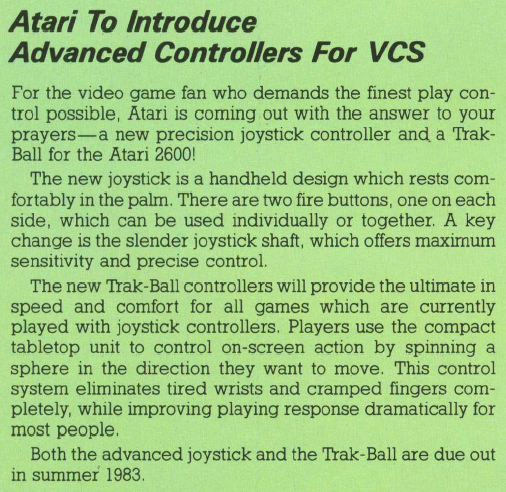
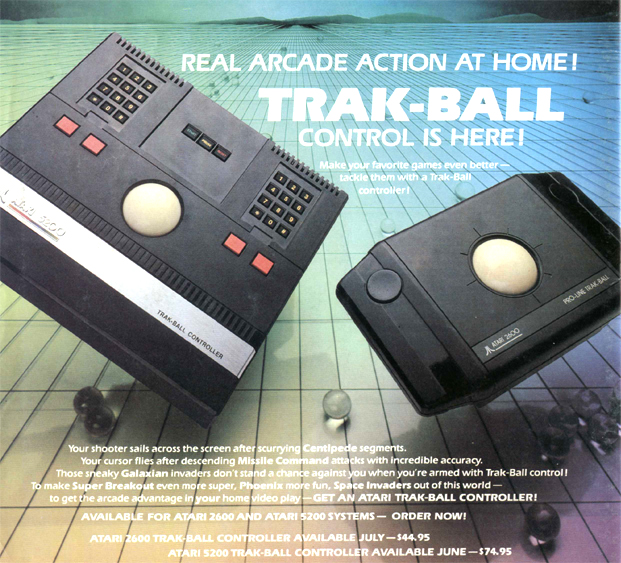
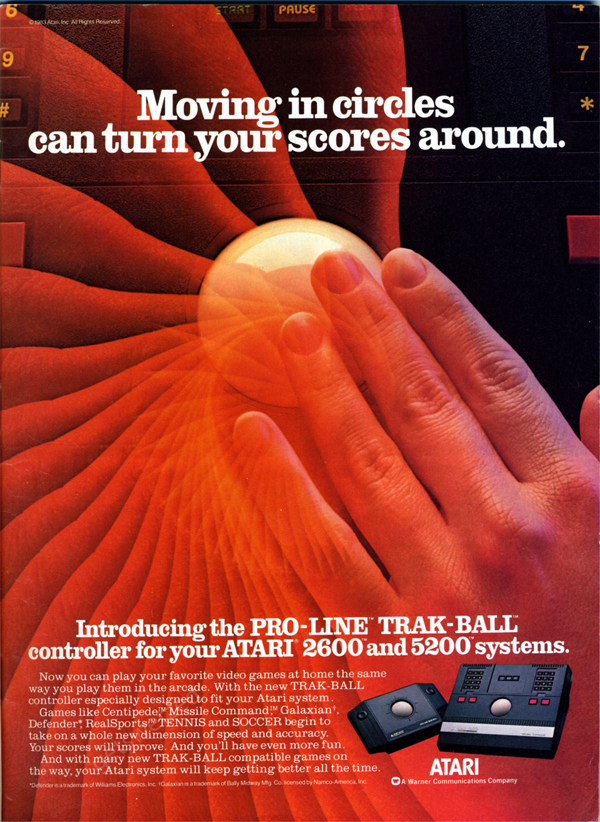
Magazine ad for the VCS/2600 and 5200 Trak-Ball controllers.
The May/June 1983 issue offered us the first advertisement for both the VCS/2600 and 5200 Trak-Ball controllers, along with their respective prices ($45 and $75), as well as an article on how they worked. Of particular interest is the last part of that article, where it explained the difference between digital and analog controls, and in particular, between the VCS/2600 and 5200 controllers. The author (Atari Age editor Steven Morgenstern, I assume) went on to state, "The reason 2600 and 5200 Trak-Ball controllers are different is that the Atari 2600 will only accept digital control." Hold up. Full stop right there. No, the 2600 is certainly not limited to only using digital controls. It uses both digital and analog, as both joysticks and paddles were included with the system the first few years it was sold. Without the latter, Breakout would be about as much fun as juggling bricks. Since Atari decided the 5200 should have analog joysticks when the vast majority of arcade games used digital joysticks, the $75 investment in a Trak-Ball controller was worth every penny for those few games that took advantage of it (a better investment would have been Wico's digital joystick, but I digress). Of the 28 games that Atari released for the 5200 between 1982-84, there were only 9 that fully supported analog controllers:
Centipede
Galaxian (the original arcade game used digital left/right controls, so this
drastically changes the game)
Missile Command
Pole Position (apparently Dan Kramer had GCC include extra code for the Trak-Ball
controller to support the proposed Driving controller)
RealSports Baseball
RealSports Soccer
Space Invaders (the original arcade game used digital left/right controls,
so this drastically changes the game)
Star Raiders
Super Breakout (the original arcade game used an analog spinner)
There were just as many unreleased games in development (29), some which might have fully supported analog controllers. Three of those are known to support them - RealSports Basketball, Tempest, and Xari Arena (the 9-20-83 version). The programmer for Tempest, Keith "Keithen" Hayenga, eventually completed and released it in 2013. Millipede is another unreleased game that should have fully supported analog controllers, but none of the prototype versions found do.
Documentation Errors
The manuals for the following games all mention using the Trak-Ball controller:
Centipede (listed as a future accessory)
Defender* (listed as a future accessory)
Galaxian (listed as a future accessory)
Missile Command (listed as a future accessory)
Pengo* (only manual to include the Trak-Ball compatible logo shown below)
Pole Position
RealSports Football* (listed as a future accessory)
RealSports Soccer (listed as a future accessory)
RealSports Tennis*
Space Invaders (listed as a future accessory)
Super Breakout (listed as a future accessory)
Of these, those marked with an asterisk (*) don't fully support analog controllers. The manual for RealSports Football mentions it's Trak-Ball compatible, but also notes there's no advantage to using them since your players move at the same speed regardless of how fast you spin the Trak-Ball!
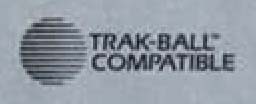
The 1983 Atari 5200 Super System poster/catalog identifies 7 games that are Trak-Ball compatible with the same logo:
Centipede
Galaxian
Jungle Hunt*
Missile Command
Pole Position
RealSports Basketball
Space Invaders
Of these, Jungle Hunt doesn't fully support analog controllers. RealSports Baseball, RealSports Soccer, and Star Raiders are not identified with the logo.
Prior to the Trak-Ball compatible logo being created, some manuals indicated fully analog support by way of a joystick with segmented directional arrows:
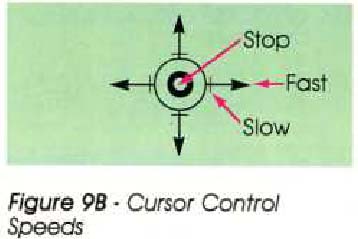
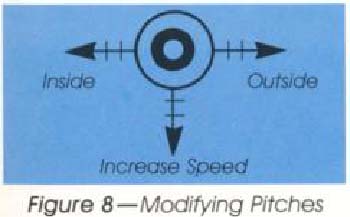
RealSports Baseball full analog control icons
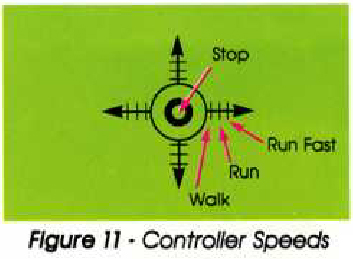
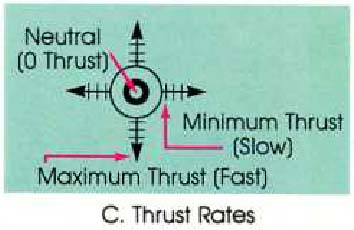
RealSports Soccer (LEFT) and Star Raiders (RIGHT)
full analog control icons
As far as 3rd-party games, at least 4 are known to support analog controls:
The Dreadnaught Factor (by Activision)
Gorf (by CBS Electronics. The original arcade game used digital left/right
controls, so this drastically changes the game)
Kaboom! (by Activision. The original VCS/2600 version used an analog
spinner)
Star Wars: The Arcade Game (by Parker Brothers)
There's also some homebrew games that support analog controls:
Chicken (Synapse Software 800 conversion)
RealSports Curling
Atari's Anemic Software Support for the VCS/2600 and 400/800/XL
Although the Trak-Ball wasn't originally advertised as being for use with Atari's home computers, the VCS/2600 model (CX22) was later redesigned (CX80) to better match the XL line:
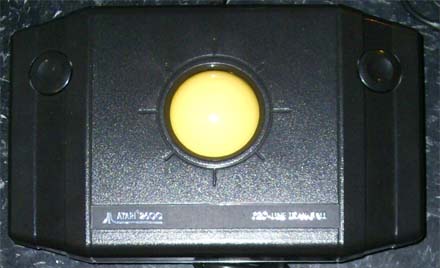
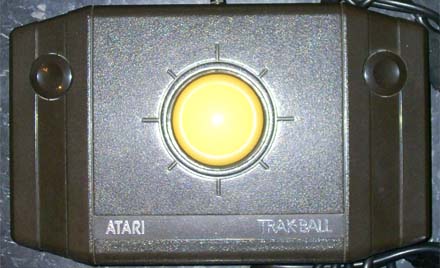
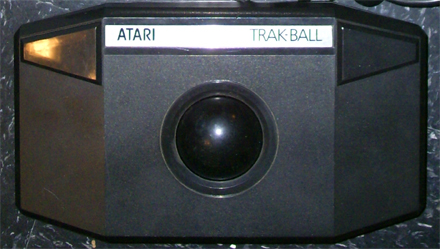
The original VCS/2600 version (CX22) was labeled "Pro-Line Trak-Ball", with a later
release dropping "Pro-Line" name.
A 3rd version (CX80) was redesigned to match
the XL computer line.
The original "Pro-Line" version of the controller has a white ball, round fire buttons, and an all-black case. There's a hole and markings on the left side of the case for a Trak-Ball/joystick mode switch, but the pcb design doesn't support it (and the hole is covered up); according to Atari's CX Trakball field service manual, only 15,000 of these single-mode versions were produced. The 2nd version of the controller has a white base (and no "Pro-Line" text on top) and the pcb has the mode switch. Both versions are model CX22; the 3rd XL-style version is model CX80 and has a black ball and triangular fire buttons. The mode switch is now on the back and is marked "JS" (for joystick) and "TB" (for Trak-Ball). The case was designed by Tom Palecki.
Without getting too technical about the differences between the versions (the details of which are best saved for another article), the most-compatible version is the 2nd one, which is by far the more common one to find. This version offers simulated Trak-Ball movement with joystick games (when the mode switch is set to "TB"). As for which VCS/2600 games were released that support the Trak-Ball's full analog control, the answer is none! That's right. Atari made no effort to include support true Trak-Ball (i.e. analog) with any of their arcade Trak-Ball game conversions, this controller version simulates analog movement by pulsing the digital signals. That's as close as you'll ever get to having true Trak-Ball control on the VCS.
Of the 5200 games mentioned, the only 400/800 counterpart that benefits from a Trak-Ball would be Missile Command, which was a bit of a mystery to me, as the game includes an undocumented keyboard command (CONTROL+T) that allows for full Trak-Ball compatibility, some 2 years before Atari released the controller! I asked Rob Zdybel, the programmer for 400/800 Missile Command, how was it he incorporated support for them that far in advance:
| "We wanted to play with trackballs. and so we did. We made our own trackballs. I made the code cuts for trackball/three bases and distributed the initial versions (those things do tend to replicate, though) - all for the price of a very nice custom-built trackball presented to me by the 800 hardware technicians." |
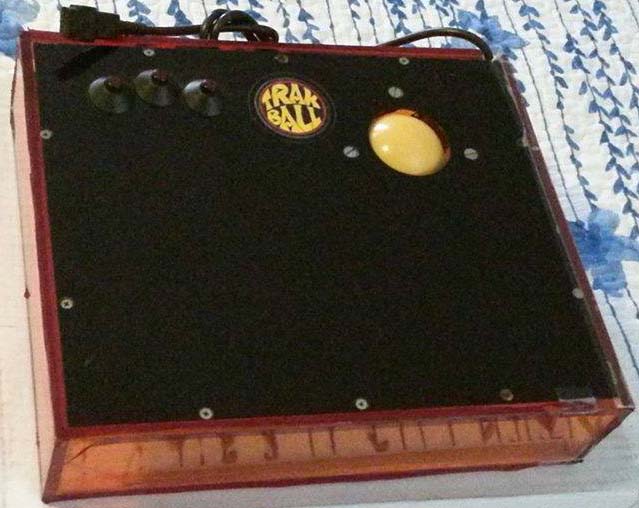
Dan Kramer's custom 3-button Trak-Ball for Atari 800 Missile Command.
Final Legacy only supports it with one section in the game, on the Sea-to-Air screen. The only 3rd-party 400/800 game known to fully support it is Synapse Software's Slime (press T before playing). So, besides any games that supported the Paddle controllers, those were the only 3 to fully support it. Crystal Castles, Millipede, and Pole Position would have been a natural to use it, but they don't. Same goes for some of the RealSports titles.
Considering all the expense and effort that was put into making and marketing the Trak-Ball controllers, it's shameful how few games fully took advantage of it. It was a sham, for all owners ended up with was a $45 controller that operated the same as a joystick, yet you had Atari telling people the controller "takes a good game (like Phoenix, Missile Command, Galaxian, and Space Invaders) and makes it awesome." Well, it would have been awesome, had programmers ever bothered to support it. But since it wasn't company policy to require them to do so, they didn't.
If the fact that Atari itself barely supported its own trackball controller, consider there were 5 other companies who released or planned to release trackball controllers of their own! There was Accu Company's "Accuball":
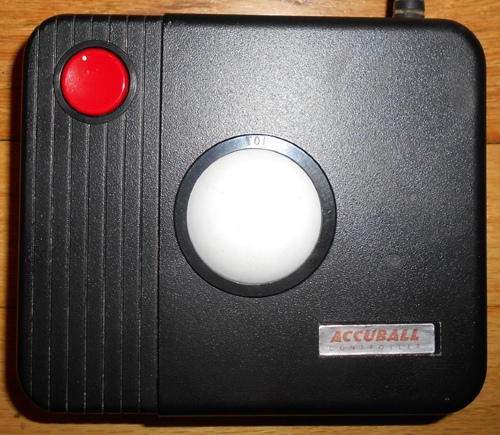
Marjac's "Joyball Trackball":
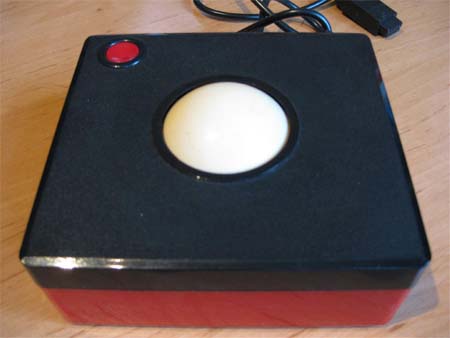
Sega Sports Pad offers simulated analog control similar to the Atari CX22:
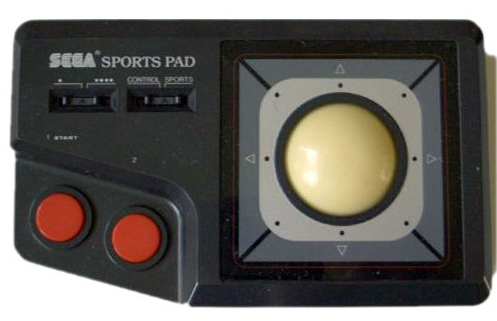
TG Products' "Track Ball Controller":
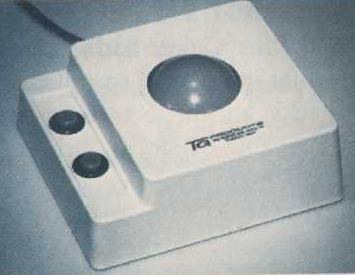
Wico's "Trackball", which offers inferior simulated analog control to that of Atari's CX22. From Dan Kramer: "The Wico trackball is a current vampire. It overloads the 2600 power adapter's output (it will run hot) and can result in console performance issues. For that reason alone it is a marginal product. 3rd-party accessories often ignore such impacts."
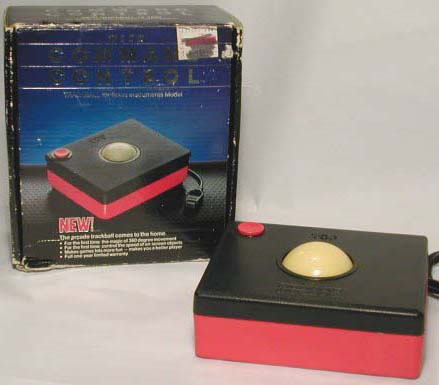
.. and Zircon International's "Track-Ball":
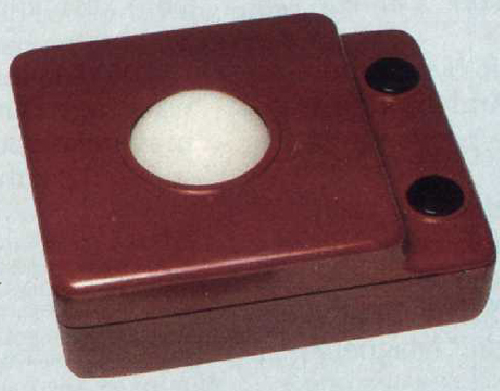
Both Roklan Corporation (with their Unroller Controller) and Spectravideo (with their QuickShot IX Deluxe Joyball Controller) released controllers that look like trackballs, but are merely plastic-domed joypads. In retrospect, they worked better as a joystick than a trackball did:
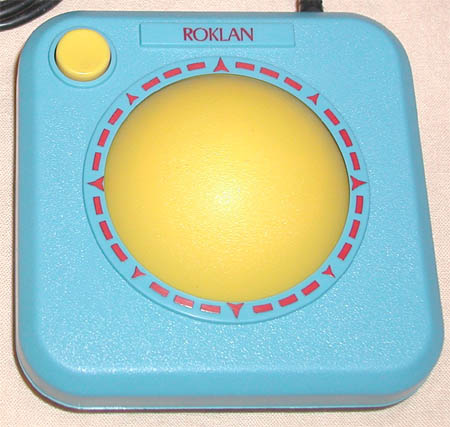
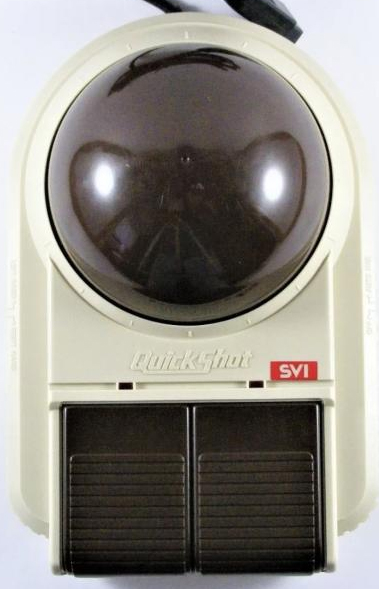
Creative Computing even made note of the lack of software that specifically supported the controllers, singling out Wico's model with their "Short Circuit Award" in the April 1983 issue (pg. 30):
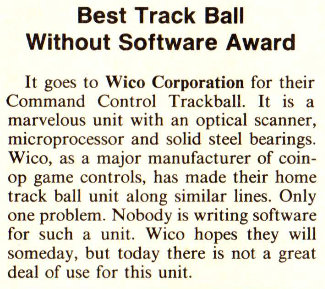
Years later someone hacked the following VCS games to take full advantage of Atari's Trak-Ball (other company's trackball controllers might require modification):
Centipede
Colony 7
Marble Craze
Millipede
Missile Command
Missile Control
Nexar, The Challenge of
Plaque Attack
Reactor
SpaceMaster X-7
Stell-A-Sketch
Star Wars - The Arcade Game
Flaws in the Crystal
The one game that's currently still missing from the above list has been deemed too much of an effort to hack for trackball support. That game is Crystal Castles, and it's one arcade port that's had a love/hate relationship with fans of the coin-op game before it was even released, starting with the creator of Crystal Castles himself - Franz Lanzinger. The game started out based on a 3-D version of Asteroids (tentatively titled Toporoids). Although it was never a smash hit (less than 5,000 were made), it was highly original and influenced at least one variant (Lode Runner's Rescue by Synapse Software). The game was advertised in the September/October 1983 issue of Atari Age, and home versions were already being planned by the next issue for all Atari game and home computer systems:
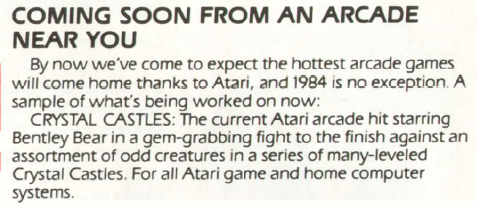
News blurb from the November 1983/February 1984 issue of
Atari Age
(pg. 12).
The only system to see a home version released that year (1984) was the VCS/2600. A prototype version for the home computers was leaked out after the market crash, and a completed version was finally released for the XEGS in 1988. A 5200 version was apparently never worked on.
Steve Morganstern was in full hype mode for the VCS version. Whether he hyped it because it was his job (shame on you for expecting otherwise, from a company-owned publication), because this was the April Fool's issue (and wasn't meant to be taken seriously), or because it ended up being the last issue of Atari Age (and knowing he wasn't going to be around to answer letters from angry subscribers), we'll never know. But when he's telling everyone the VCS version features "flicker-free" animation, you know the fix is in, because even being a 16K, SARA-enhanced cartridge doesn't mean graphics can't flicker (and trust me, they do). The blurb for the game includes a real zinger, proclaiming if you have a Trak-Ball controller, "the game becomes even better!":
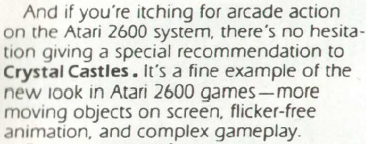
Steve Morganstern's editorial from the March/April 1984 issue of
Atari Age (pg.
5).
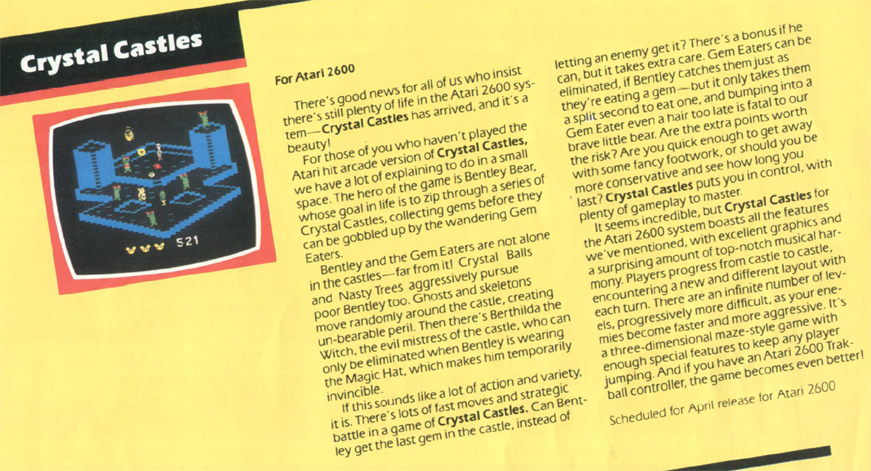
Ad for Crystal Castles from the March/April 1984 issue of
Atari Age
(pg. 7). Club price was $31.95.
By the end of the year, stores were
selling new copies for less than $5 each.
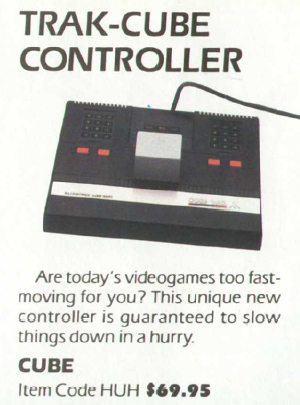
April Fool's joke ad from the March/April 1984 issue of
Atari Age
(pg. 25).
Every copy of Crystal Castles might as well have included one, since
the game doesn't fully support the Trak-Ball.
Which brings us to Franz's issues with the VCS version. One only needs to look at both versions side-by-side to understand why he was so frustrated and angry about it:
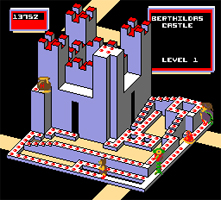
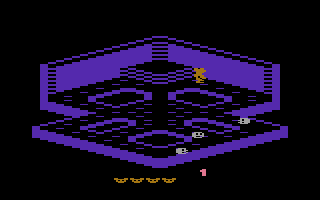
Peter Niday (who programmed the VCS version) was a very talented designer, but asking nearly 10-year-old hardware to keep up with the latest technology was simply asking the impossible no matter who was programming it, especially when Atari's management didn't learn from rushing E.T.'s development and instead kept adhering to baseless completion deadlines for game development.
Thanks to Jed Margolin's VAX email archive, here's Franz's uncut comments about the VCS version of his game, and his failed effort to keep it from being released, as well as Chris Downend's response:
|
From: KIM::FXL 30-JAN-1984 02:01
From: KIM::DOWNEND 1-FEB-1984 17:22
-get rid of golden handcuffs
sales as of 1/13/84: 4363 uprts; 450 cocktails
So the Company retains earnings of a couple of million to get thru
the many dry spells this industry faces or to buy new equipment etc.
Also note that Atari had to build about a 1000 games to break even
on the Engineering costs. Thus, profit doesn't really appear until
1000 games are built, but Atari pays bonus anyway. I agree 7 months
is a bit long to wait, but Atari has not made all that much and the
product was not profitable until long after the initial production
started. Product Bonus was paid quarterly at one time; we should go
back to that scheme. |